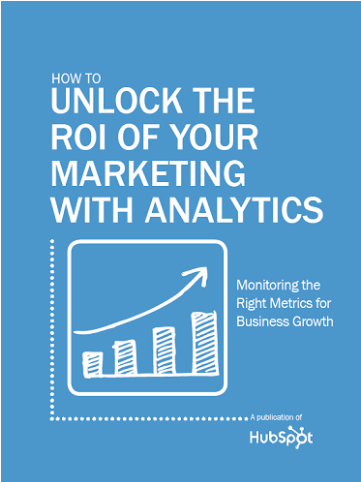However, with great power, comes great responsibility.
Nurturing is all about building relationships and providing value. Through helping your leads, users, and customers answer questions and tackle challenges, you build trust and prime them to buy from your company. However, many businesses today are using automation in ways that run counter to these goals and create a poor experience for their contacts.
Before we go any further, some context about our nurturing and automation “fundamental truths” will be helpful. At HubSpot, we believe that nurturing and automation:
- Should not be about your company. If your flow only talks about your business, the awards you’ve won, how many customers you have, etc. people will tune you out, and your nurturing won’t be effective.
- Should be customer-centric. You want your customer to feel empowered by your business.
- Should not be a sales pitch. If your flow only talks about feature lists, price points, and discounts, people will lose interest quickly.
- Should be helpful. You want to provide value up front, giving your contacts something that helps them before asking them for a single thing.
- Should not be left on autopilot. If you leave your flow running for long periods without analyzing its performance, your nurturing won’t be effective.
- Should be continually improved. You want to test, learn, and iterate to create an ever-better experience for your contacts.
If your automation falls into one of the “should not” categories above, don't panic. This stuff IS NOT easy. Heck, we didn’t even nail this the first time. Read on to see how you can start fixing your nurturing strategy, and how we grew our own engagement by over 1000%.
Nurturing Based on Content Topic
We’ll start by taking a quick trip back in time.
It’s 2015. You come to hubspot.com and, after filling out a form, you download a social media offer, becoming a new lead in our system.
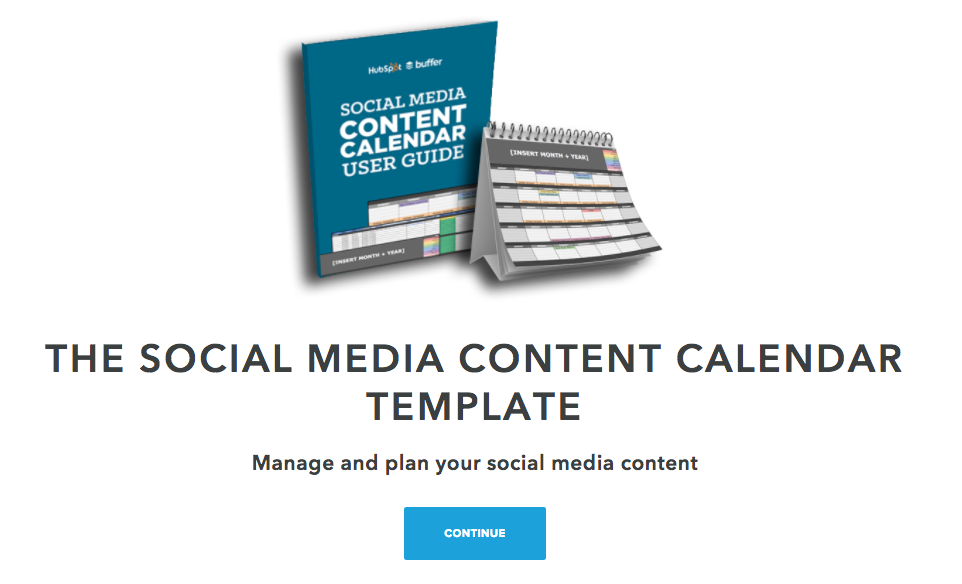
Because we see you’ve downloaded a social media offer, we enroll you in an email nurturing flow focused on social media, sending you additional social media content, and eventually trying to get you to book a social media assessment call with our sales team.
This strategy worked pretty well for us. 30% open rate (OR), and a 14% click-through-rate (CTR).
Nurturing Based on Goals
Now let’s fast forward to 2016.
We reflected on our 2015 strategy, and thought we may have gone too narrow. We know that the majority of our leads “wear many hats” or, do more than just one thing for their company.
So we aimed to broaden our approach. We identified the main problems HubSpot solved for: driving traffic to your site, converting that traffic into leads, and closing those leads into customers. We then bucketed all of our content offers into one of those three buckets. Then, when a new lead was created through a content download, we enrolled them into a nurturing flow associated with the appropriate bucket.
We appropriately named this our bucketed approach.
This approach worked well for us too. We saw an uptick in OR to 27% and CTR to 17%.
Our New Nurturing Strategy: Pick Your Own Adventure
However, moving into 2017, we still had some work to do. We realized we were making assumptions about our leads’ most pressing business challenges, and we made the decision to stop assuming.
What did this look like in practice?
Well, we did something pretty crazy:
We asked.
We asked our contacts what their biggest challenge was and then contextually nurtured them to tackle that challenge. And maybe the craziest part? We saw our engagement skyrocket.

We call this strategy Pick Your Own Adventure. Here’s how it works.
You come to hubspot.com and, after filling out a form, download a social media offer. This action enters you as a new lead into our system.
The first email we send comes from me, and asks you what your biggest challenge is.
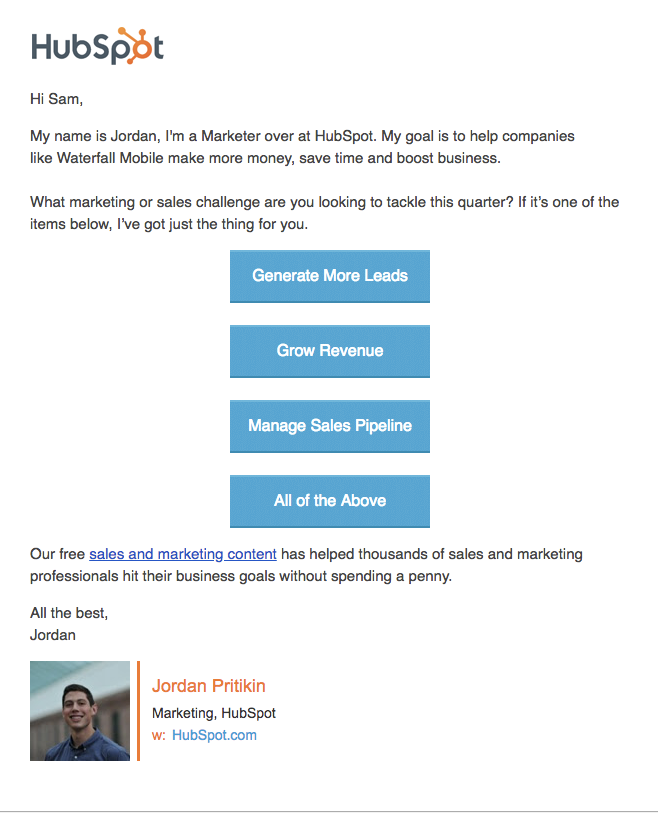
Let’s say, in this example, you selected "Generate More Leads".
We then send you directly to a thank you page where you can download one of our top offers to help you tackle that challenge (no additional form fill necessary).
Next, you’re enrolled in a contextual nurturing track designed to help you tackle your lead generation challenges. Here are some of the emails that follow:
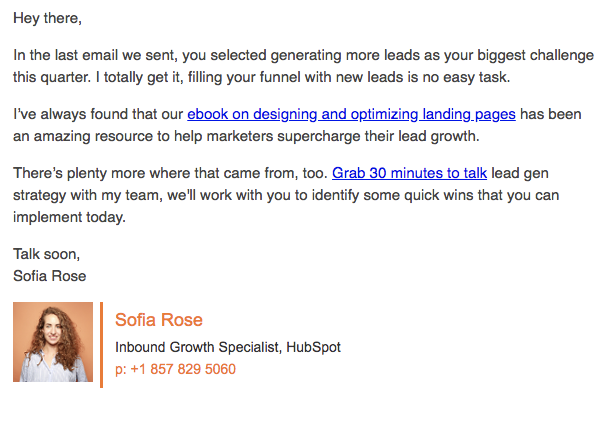
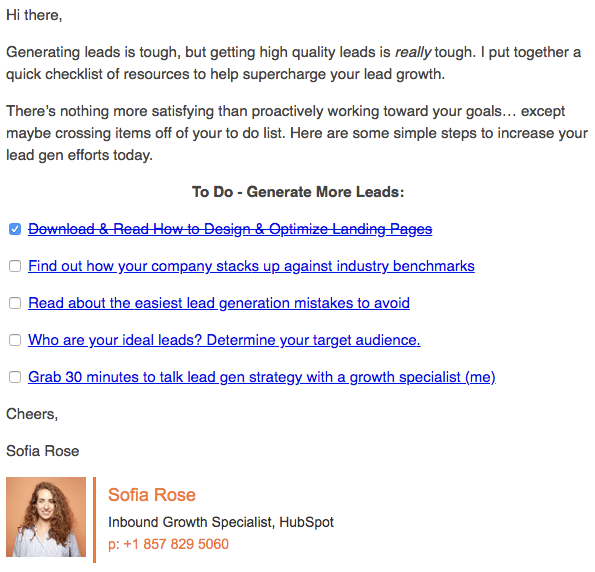

This last email generates the most meetings for our sales team of the entire flow.
Because of the relationship we’ve been building, through empathizing with your challenge, helping you address that challenge, and checking on your progress, our leads now feel comfortable enough to have a strategy conversation.
The final email of our flow goes to people who have not booked a meeting.
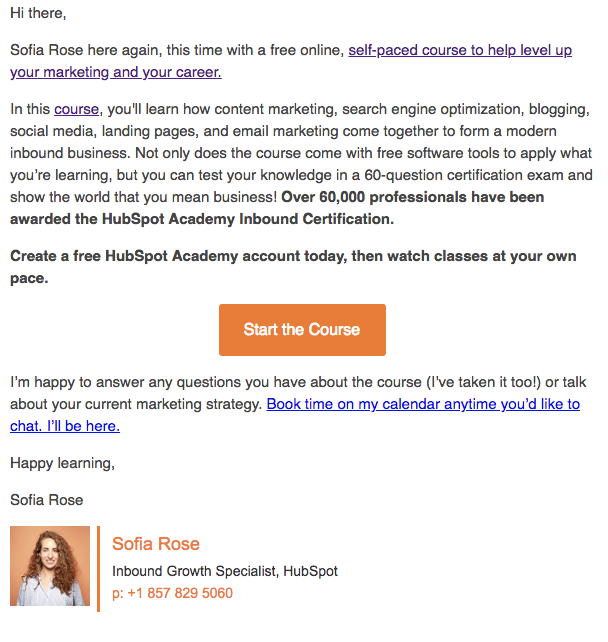
HubSpot Academy is a team of brilliant educators with an entire library of content, courses, and certifications dedicated to helping you grow your business and your career. Through this message, we show that we want to continue to provide value to you over time -- and we’re here if you ever want to talk.
So how did our Pick Your Own Adventure Strategy perform?
Drum roll please …
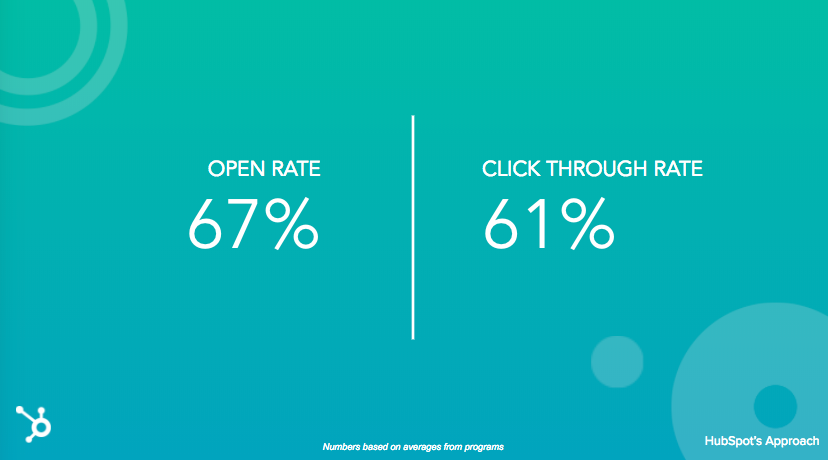
We saw incredible success with this strategy. It’s extremely rare to see open and clickthrough rates like this.
Okay, that’s pretty cool… but where does the 1000+% come from?
When comparing contacts who identified their challenge in our Pick Your Own Adventure Strategy versus those who did not, we saw over 1000% increase in engagement (CTR).

Looking at our email metrics year over year we can see that our Pick Your Own Adventure Strategy performed significantly above our 2015 and 2016 strategies.

How to Launch a Pick Your Own Adventure Nurturing Strategy at Your Company
Nurturing is all about building relationships. To provide the best experience, we need to stop assuming we know what our leads’ challenges are. Instead, just ask. Then, follow up contextually to help them tackle that challenge.
To create a Pick Your Own Adventure Strategy of your own follow these simple steps:
- Identify your main persona’s biggest challenges.
- Which challenges can your business solve for? You’ve just identified your “adventures”. These will be the CTAs you use in your email campaign.
- Identify which pieces of content can help your persona tackle the challenges you've identified. If you don’t have content for a specific challenge, that’s okay. This is a great exercise to identify opportunities to create new content.
- When new prospects enter your database, send them an email welcoming them and provide your “adventures.” I recommend providing four adventures total -- three specific, and one catch-all -- and each should be a CTA.
- Based on which CTA the lead clicks, enroll them into a distinct nurturing track associated with a specific adventure. If they don’t click a CTA, enroll them in the catch-all option. Pro Tip: Using the HubSpot Workflows tool you can easily take care of this part using if/then branching logic.
- Once enrolled in the unique track, send a series of emails with the content you outlined above.
- When crafting your emails, think about providing value up front. Focus the first few emails on addressing their challenge. Pro Tip: Make sure to acknowledge and empathize with the challenge your lead has selected in your emails. Try using some copy like the following “Last time we spoke, you mentioned your biggest challenge is X. I get it, X isn’t easy!”
- Once you’ve provided value, aim for your goal, whether that's encouraging them to book a demo of your product, scheduling a consultation call, or something else entirely.
- Collect data, analyze, and iterate.
Once you’ve finished your build, give yourself a pat on the back -- this stuff isn’t easy.
However, just because you’ve built it once doesn’t mean it’s done. I like to check in on my program every 30 days to collect email metrics and gauge the impact on down funnel metrics like marketing qualified leads, opportunities created, and new customers generated.
Pro Tip: Put a recurring event on your calendar for the first day of the month to report on how your program performed the previous month. This calendar event will hold you accountable to monitoring performance and improving over time.
Good luck and happy nurturing.
.png?width=112&height=112&name=Image%20Hackathon%20%E2%80%93%20Vertical%20(84).png)

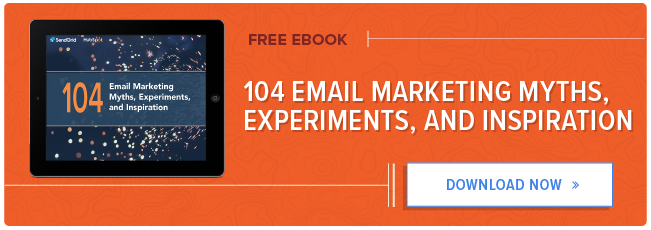
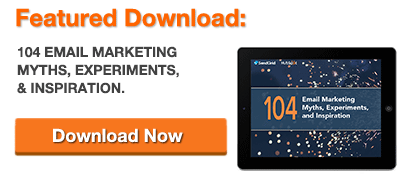



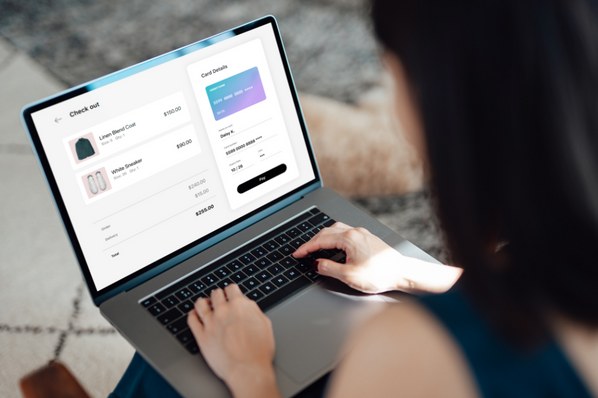



![How to Expand Your Lead Nurturing Strategy Beyond Just Email [SlideShare]](https://53.fs1.hubspotusercontent-na1.net/hub/53/file-1390659247-jpg/Blog_Thinkstock_Images/lead_nurturing.jpg)

